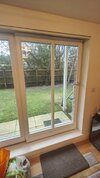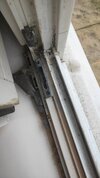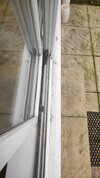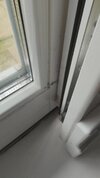- Joined
- 11 Dec 2020
- Messages
- 30
- Reaction score
- 0
- Country

Hi
I live in a block of flats where they are building extra floors. I am ground and the extra 2 floors are going above the 3rd this has gone through planning, structural engineer etc.
I've raised an issue with my door as some of the doors on the higher floors have issue with compression due to the new weight.
The developers engineer came and looked and said he believes it was wear and tear rather than due to the building work.
My door is stuck in place but when it's pulled out it will move along the runners (tilt and slide) without an issue but would have to be pushed into the frame. I've requested quotes for someone to take a look but they have said it's difficult to get parts for this type of door.
The frame doesn't looked warped but wondered is there a way I can tell and prove if it is related to the building work (I.e Would a level show parts of the frame is no longer level and could be due to movement of the building/compression etc).
If it's wear and tear and I need to fix it I will look at getting it replaced, but want to rule out it's not related to the work going on in the building.
Thanks in advance
I live in a block of flats where they are building extra floors. I am ground and the extra 2 floors are going above the 3rd this has gone through planning, structural engineer etc.
I've raised an issue with my door as some of the doors on the higher floors have issue with compression due to the new weight.
The developers engineer came and looked and said he believes it was wear and tear rather than due to the building work.
My door is stuck in place but when it's pulled out it will move along the runners (tilt and slide) without an issue but would have to be pushed into the frame. I've requested quotes for someone to take a look but they have said it's difficult to get parts for this type of door.
The frame doesn't looked warped but wondered is there a way I can tell and prove if it is related to the building work (I.e Would a level show parts of the frame is no longer level and could be due to movement of the building/compression etc).
If it's wear and tear and I need to fix it I will look at getting it replaced, but want to rule out it's not related to the work going on in the building.
Thanks in advance




